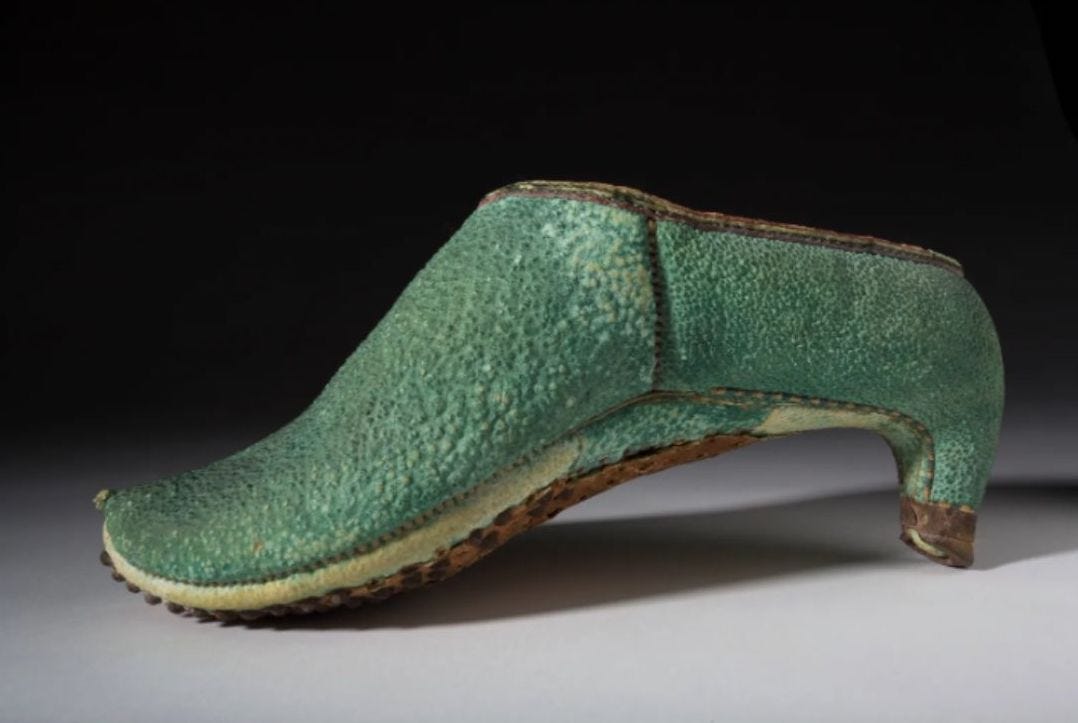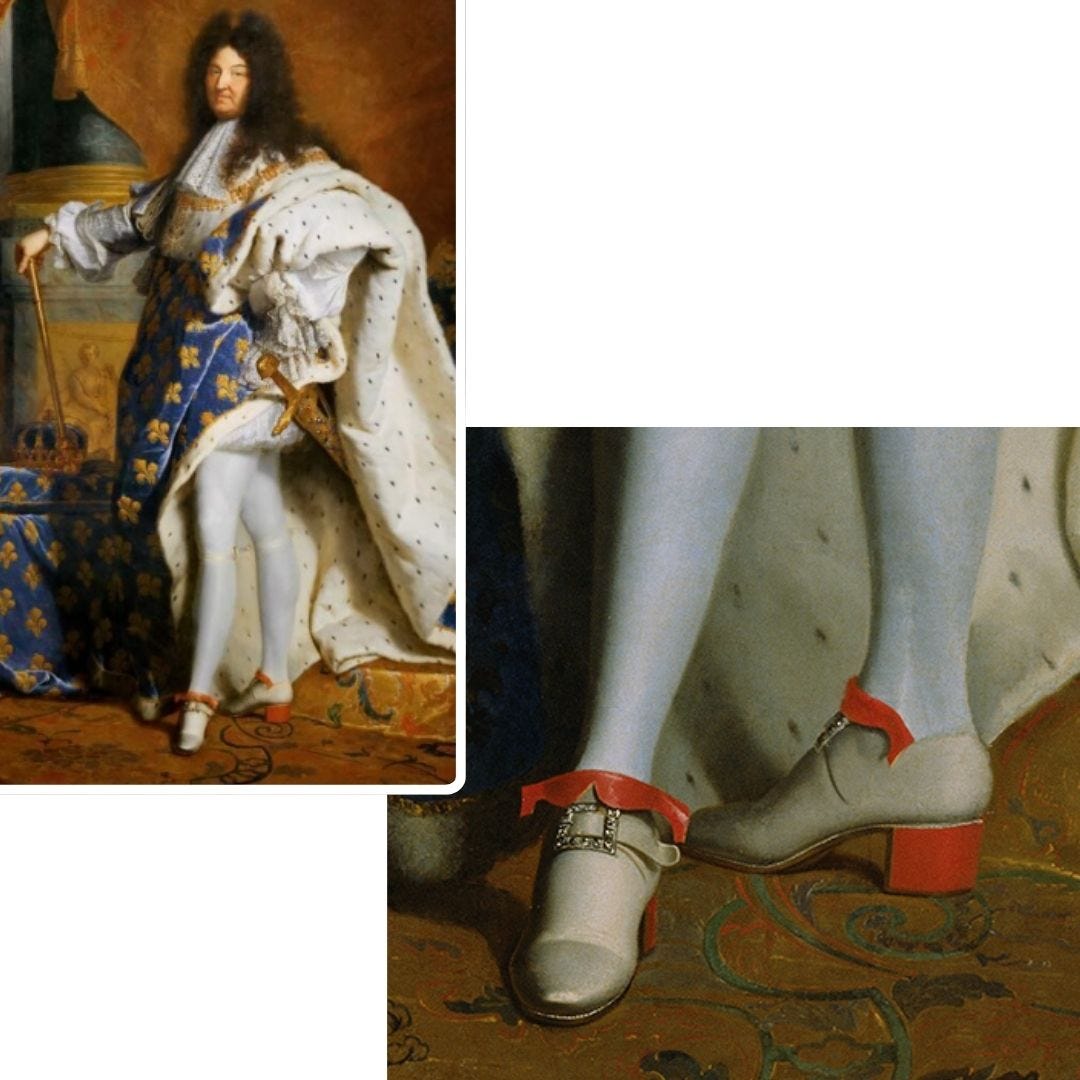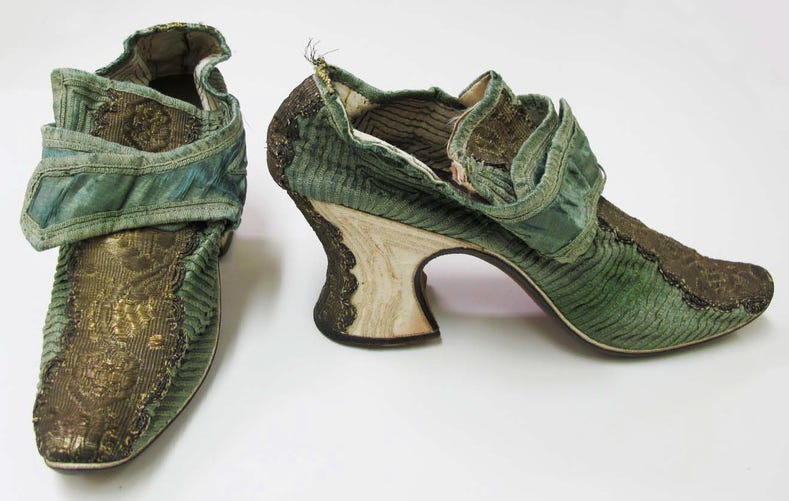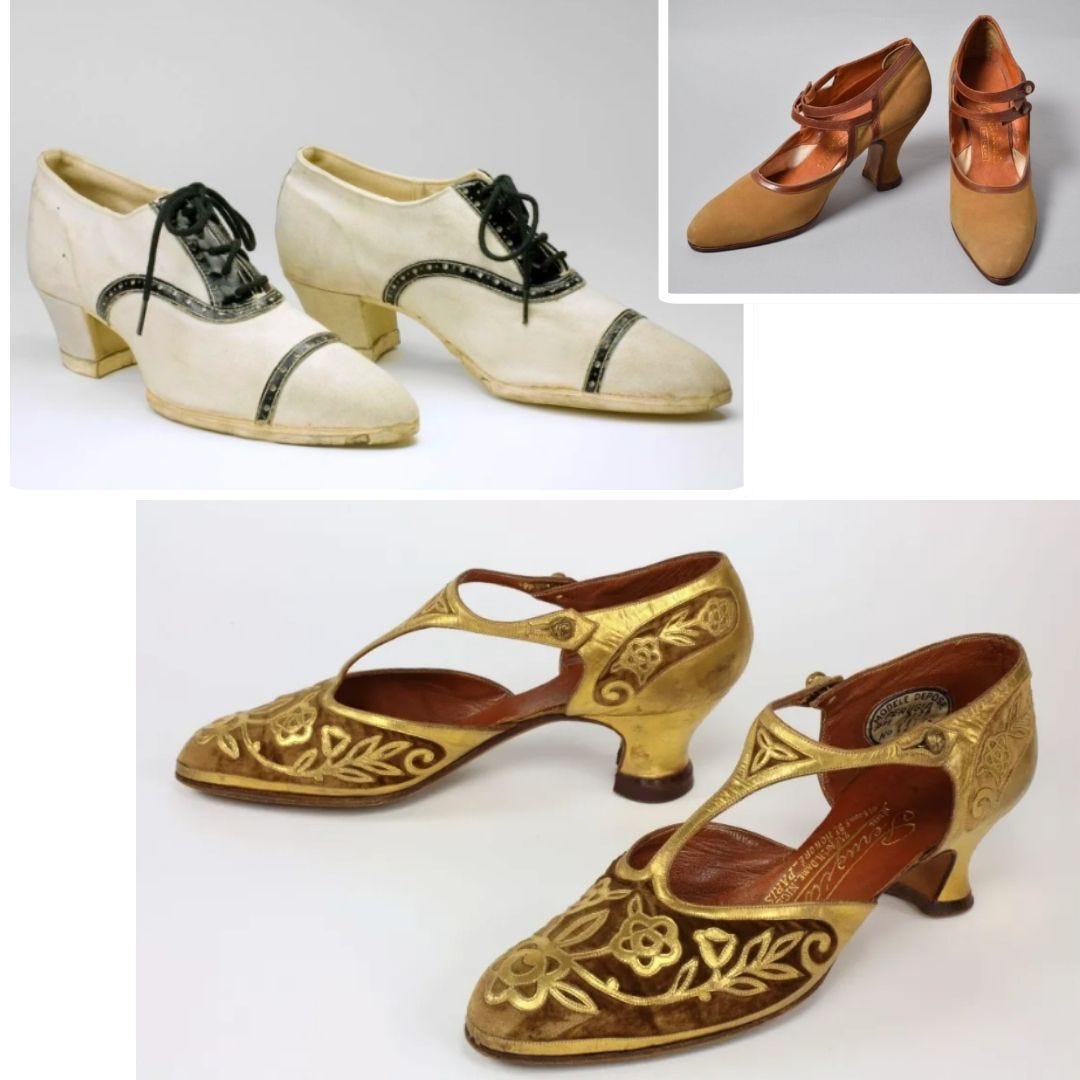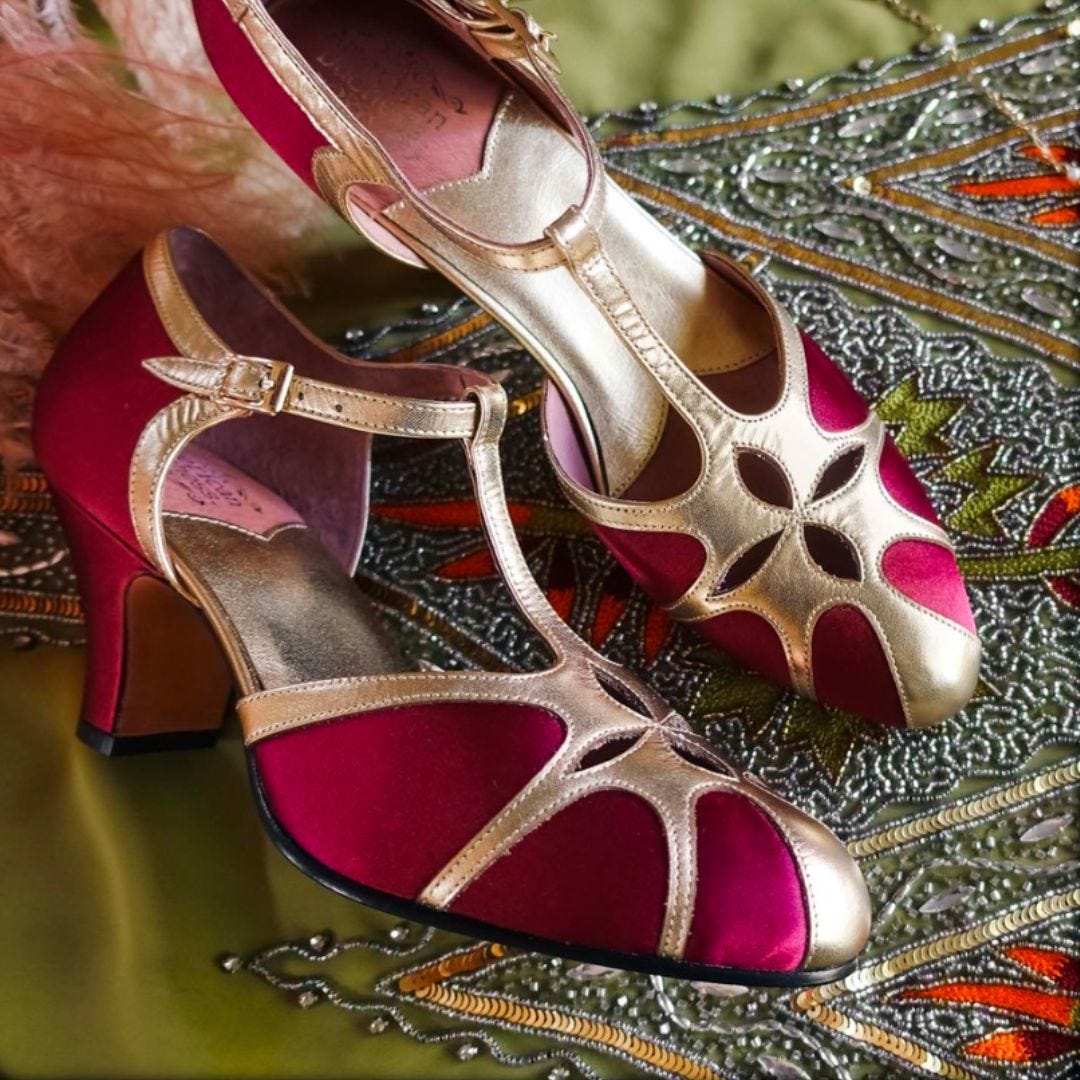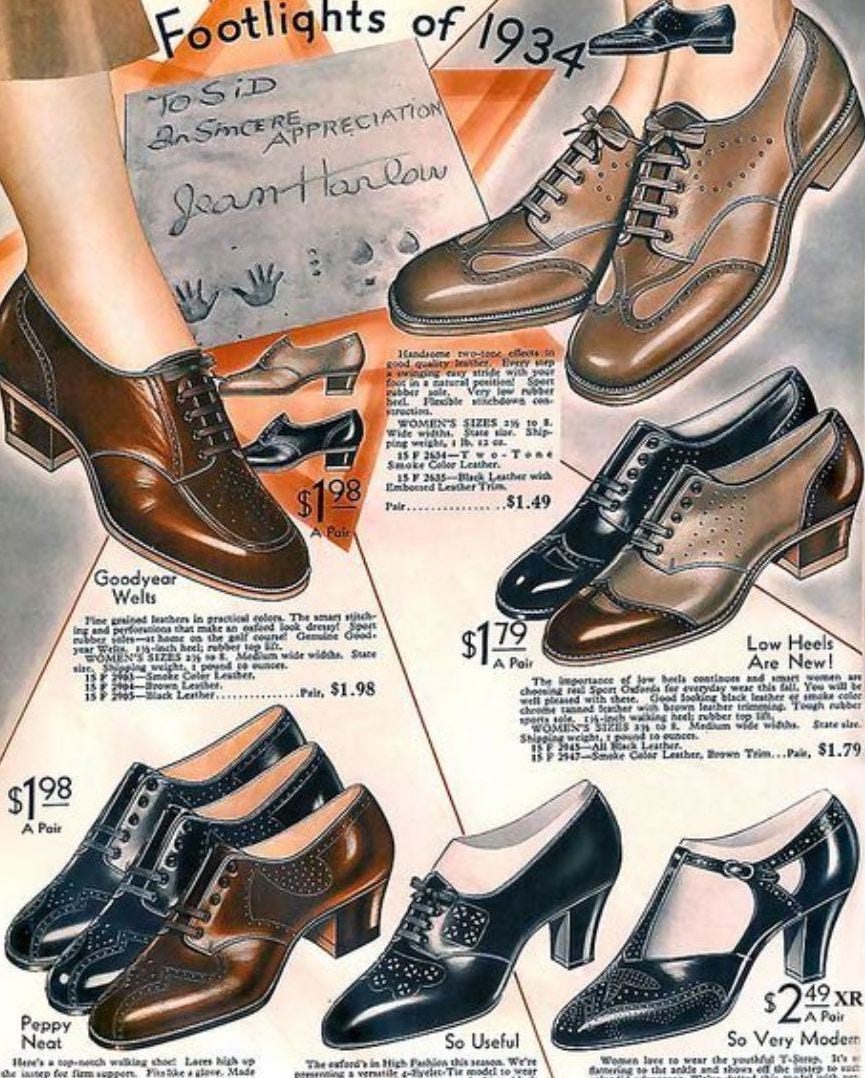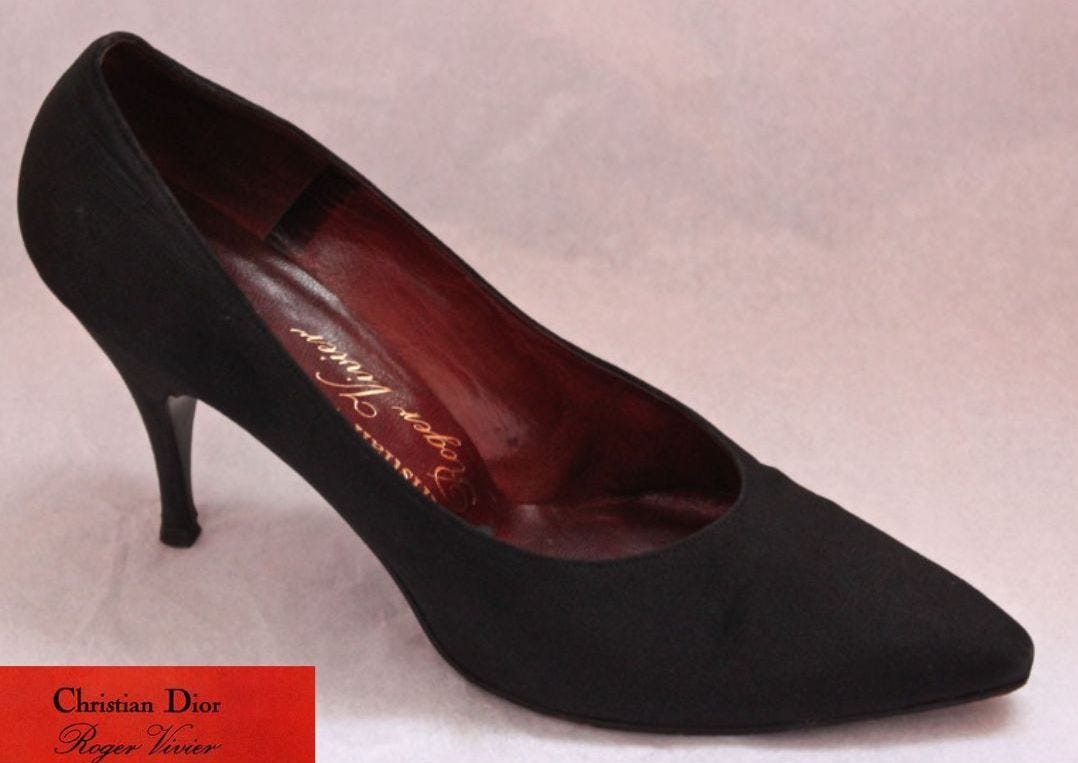SS-07: "Style Evolution: How High Heels Became Feminine Icons" - Part I
High heels for generations have signified femininity and glamour - but a pair of high heels was once an essential accessory for men.
The original high-heeled shoe was a Persian riding shoe meant to keep soldiers secure in their stirrups as they fought on horseback. At the end of the 16th Century, Persia's Shah Abbas I had the most significant cavalry in the world. He was keen to forge links with Western European rulers to help him defeat his great enemy, the Ottoman Empire. So, in 1599, Abbas sent the first Persian high-heeled soldiers on a diplomatic mission to Europe. Their heeled shoes fascinated the European aristocracy and became a fashion craze.
King Louis XIV of France, who stood at just 5 feet, 4 inches tall, wore shoes with 4-inch heels to appear taller and more imposing. He had a particular pair made of red heels and declared that only his court members could wear them. This made it easy for people to see who had the king's favor – they just had to look at their shoes.
The shift towards femininity in heels began as bold women incorporated this once-masculine symbol into their attire as a form of rebellion. Like men's clothing, high heels symbolized a liberated woman claiming traditionally male authority. However, this transformation might have remained an exception if not for a significant cultural shift: The Great Masculine Renunciation. With aristocratic values challenged and ideals of equality rising, extravagant fashions became outdated. By the late 18th century, men in heels were ridiculed, solidifying high heels as exclusively feminine symbols.
To moralists, high heels soon became a symbol of feminine vanity or superficiality. However, in reality, women wore high heels for themselves and often to appeal to men in various ways. Sporting fashionable high heels allowed women to display wealth and privilege, something the practical man of the Enlightenment era couldn't do as overtly. The concept of a "trophy wife" emerged as evidence of her husband's prosperity. High heels became a status symbol, showcasing a man's wealth through the woman he supported. Additionally, high heels held a sensual allure. They elongated the leg's appearance, a feature both men and women appreciate. Moreover, their design, requiring small, deliberate steps and hindering swift movements, conveyed vulnerability, adding an erotic undertone to their appeal.
During the Victorian era (1830-1901), advancements in manufacturing led to better-quality women's shoes, including the introduction of modern high-heeled booties. These small and elegant heels offered wearers a refined look and comfortable feel.
In the 1920s, the "Louis" heel made a comeback, drawing inspiration from the footwear of Louis XIV. With hemlines becoming shorter, this delicate heel perfectly complemented the fashion of the time.
However, as the 1930s arrived amid the Great Depression, heels became lower and wider to reflect the economic downturn. Additionally, World War II disrupted mass production, causing heels to become a luxury item once more, primarily available to the wealthy due to limited supplies.
Women's shoe heels remained relatively unchanged—low and chunky—until after World War II when the Italian stiletto revolutionized fashion with its tall, thin heel spike, giving birth to the iconic Stiletto heel.
Stay tuned for next week's edition, where I'll delve into who created the stiletto heel, its rise to fame, along with other fascinating facts.
Here are some questions to help you become more aware of your relationship with the shoes you wear and how they connect to your brand and messaging.
Do you wear heels?
When do you wear heels, and why?
What height of heels do you prefer: low, medium, or high?
Do your shoes reflect your personal style brand?
Do you have a favorite shoe brand that you rely on?





